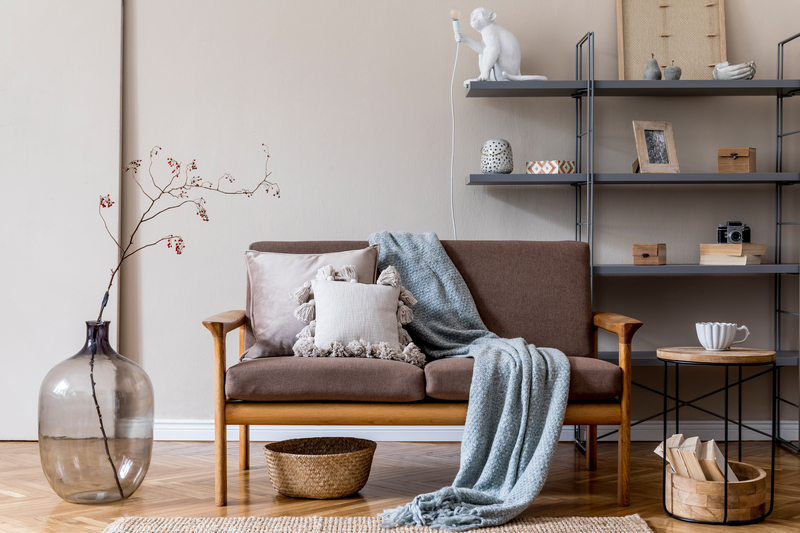Home staging—where you decorate your house in an effort to entice buyers to bite—may seem counterintuitive at first blush: Why spend money on real estate if you’re moving out? Simple answer: because home staging can get you more money for your home sale.
If your real estate agent has suggested staging, it’s because evidence shows staging real estate is usually well worth the effort. On average, staged homes sell 88% faster and for 20% more than nonstaged homes, which is nothing to sneeze at. But just how much does home staging really cost?
Here’s what to know about the cost to stage a home, so you can decide if paying a professional stager is worth the investment for you.
Inside the numbers: How much does it cost to stage a house?
File this one under “obvious”—but the pricier the staged home, the higher the potential home staging costs. As a general rule of thumb, the average cost for most stagers is $300 to $600 for an initial design consultation, and $500 to $600 per month per staged room.
“Therefore, staging a 2,000-square-foot home would cost around $2,000 to $2,400 a month,” explains real estate professional Crystal Leigh Hemphill. Most professional home stagers also require a three-month minimum staging contract, “even if you sell the home in 24 hours.” That could bring your final staging bill to $7,200.
Home staging might sound expensive, but if you own a vacant home, for example, you’re already paying lots of bills every month that your unstaged house sits empty. If a home stager can help buyers envision how fabulous your living room looks with a little classy furniture and tasteful decor, the costs of home staging may be some of the best money you have ever spent.
What makes the cost of staging a home more expensive?
Most home stagers work with the knickknacks and art that the homeowner already owns. But sometimes home stagers “need to purchase new accessories, fresh towels, flowers, and/or fruit, as these small touches make a big difference,” says Sheila Schostok with Your Home Matters Staging and Redesign, which serves Chicago and southeastern Wisconsin. This is especially true with a vacant house. The stagers’ new purchases will add to the overall cost of the project.
The layout of your home could also add a cha-ching to the home staging costs. Home stagers often use lightweight versions of basic furniture pieces. However, a home staging job that requires heavy lifting in a multistory house still usually means hiring additional help to move furniture, says Schostok.
And if you’re listing a vacant home because you’ve already moved out, you’re looking at home staging costs that include rental fees for every stick of furniture and all furnishing and decor items from a stager.
Conversely, if you inherited a ton of antiques (or have a One King’s Lane addiction), the stager may recommend you declutter by putting excess knickknacks into storage, tacking that monthly rental onto your overall staging costs. Staging services may also suggest that sellers declutter and depersonalize the home by removing unusual, religious or political, and personal items, so home buyers can more easily envision themselves living in the home.
A final expense, an important one that can help ensure staging success, is the price of painting a room. A fresh coat in a 12-by-12-foot room will cost a DIYer around $200, or $400 to $700 if left to the pros.
Saving tips: How to save on home staging
You don’t have to pay a home stager to transform the decor of your entire house from basement laundry room to attic storage.
“A great way to save money when staging is by only focusing on the main areas of a home,” says Schostok.
These are the rooms potential buyers would spend the most time in—the kitchen, living room, dining room, and master bedroom. You’ll also want to pay attention to what the buyers see when they first step in the front door. That first impression, whether it be a bare, unstaged home or an inviting, perfectly staged one, can make the difference in whether they decide to buy and how much they are willing to pay for your house.
Another cost-saving home staging option is to limit yourself to an initial consultation with a home stager, instead of full-service staging. When Schostok does a home staging walk-through with the homeowner, offering home staging tips to maximize the potential for each room, “the price is far less, $125 for 90 minutes.”
You may want to ask your real estate agent if she thinks your home would benefit from home staging. Your agent may also recommend a home staging service or even offer other cost-saving tips besides staging, based on her experience showing real estate to buyers. For example, your agent may recommend that you start by decluttering your home yourself, or spend the money on a specific home improvement task, instead of hiring a professional stager, depending on her own first-time impression of your home.
The biggest cost savings for home sellers who use home staging? Selling their home faster, at a better price, and without months of carrying costs—because their house was properly staged and buyer-ready.
Margaret Heidenry, realtor.com
